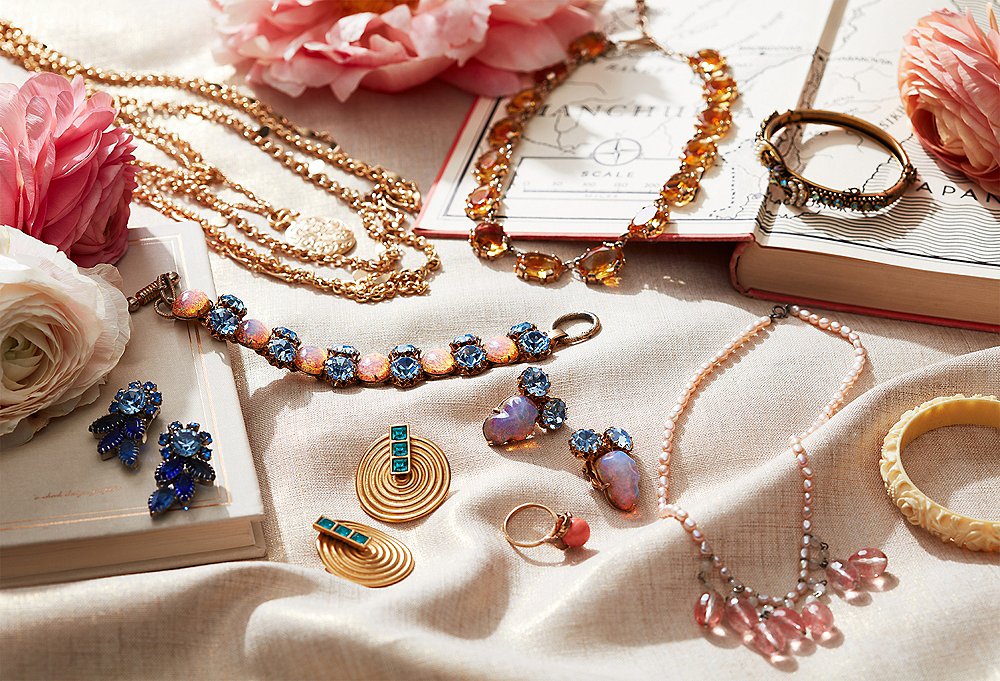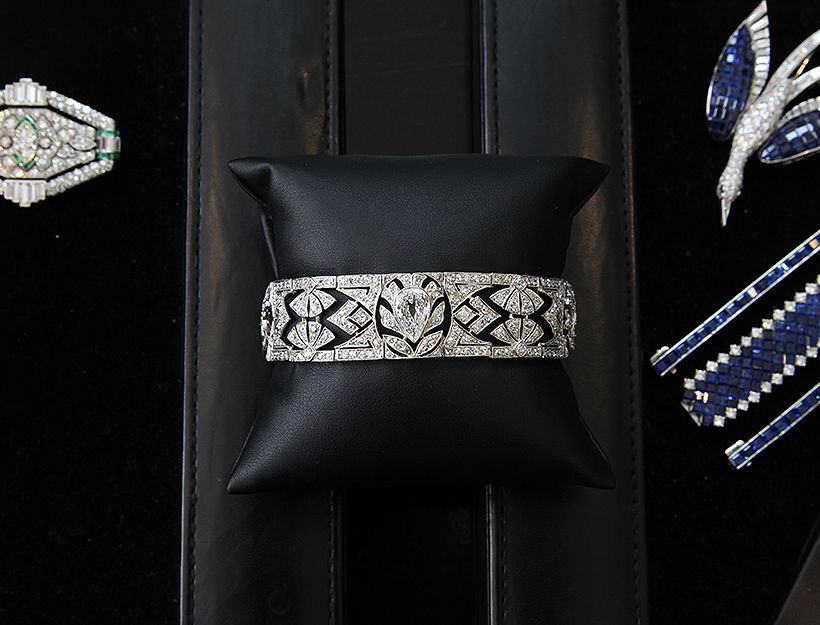Estate Jewelry Austin TX: The Best Places to Shop for Authentic Vintage Jewelry
Estate Jewelry Austin TX: The Best Places to Shop for Authentic Vintage Jewelry
Blog Article
Discover the Rich History Behind Stunning Estate Jewelry Collections
The expedition of estate fashion jewelry collections provides a special window into background, revealing the intricate connection between craftsmanship and social development (estate jewelry austin). Each piece is not merely a testimony but an accessory to the artistic activities and social values of its time, from the luxuriant information of the Victorian period to the structured style of the Mid-Century Modern. As we check out these exceptional artefacts, we discover tales that go beyond generations, prompting us to consider not simply their beauty, yet the lives they have touched and the minutes they have actually seen. What secrets might these collections still hold?
The Origins of Estate Fashion Jewelry
How did estate fashion jewelry involved embody the abundant history and creativity of past periods? The beginnings of estate jewelry can be traced back to different periods of craftsmanship, where precious jewelry was not simply a device however a reflection of societal values, technological improvements, and creative expressions. Each piece narrates, often connected with the lives of their previous proprietors, enveloping individual stories alongside historical contexts.
The term "estate jewelry" normally refers to used pieces, often from considerable periods such as Victorian, Art Nouveau, or Art Deco. These pieces were produced with thorough interest to detail, showcasing the ability of artisans who utilized products like gold, silver, and precious gems. Unlike modern fashion jewelry, estate items typically include one-of-a-kind layouts that highlight the looks of their time, thus working as concrete links to the past.

Notable Design Eras
Throughout history, a number of significant design eras have considerably influenced the advancement of estate precious jewelry, each identified by unique designs, products, and social contexts. The Georgian age (1714-1837) noted the start of intricate designs, usually featuring nature-inspired concepts and the usage of products like gold, silver, and gems established in fancy setups. Following this, the Victorian age (1837-1901) presented romantic styles, with emotional jewelry and cutting-edge techniques such as using enamel and cameos.
The Art Nouveau period (1890-1910) celebrated organic kinds and the appeal of nature, making use of materials like opals and pearls in flowing designs. This was prospered by the Art Deco age (1920-1939), which embraced geometric patterns, vibrant shades, and luxurious materials such as platinum and diamonds, mirroring the modernist spirit of the moment.
The Mid-Century Modern era (1940-1960) showcased streamlined styles and making use of unusual materials, stressing minimalism and performance. Each of these eras not only shows the imaginative motions of their time however likewise encapsulates the social values and technological innovations that formed fashion jewelry layout, making them a fascinating subject for collectors and chroniclers alike.

Famous Estate Fashion Jewelry Collections
The rich history of estate jewelry is perfectly exemplified by numerous distinguished collections that showcase the virtuosity and workmanship from various design eras. Among one of the most famous is the Cartier Collection, which shows the high-end and advancement of the legendary French jeweler. Parts from this collection usually include splendid gemstones and detailed layouts, highlighting the brand's commitment to great workmanship.
Another notable collection is the Lady of Windsor's fashion jewelry collection, which comprises numerous distinctive pieces, consisting of the famous "Windsor" bracelet. This collection not just exemplifies the sophistication of the Art Deco period however likewise brings click for more a rich narrative of love and loss, as it came from Wallis Simpson, who famously wed Edward VIII.
The collection of the late actress Elizabeth Taylor additionally stands apart in the realm of estate precious jewelry. With various items developed by prominent jewelry experts like Bulgari and Cartier, her collection embodies beauty and refinement, underscoring her personal style and affinity for one-of-a-kind gems.
These popular estate precious jewelry collections act as a testament to the long-lasting attraction of fine jewelry, using insight into the imaginative and social movements that formed their production.
The Social Relevance
Estate fashion jewelry collections hold extensive cultural importance, mirroring not just the aesthetic values of their respective periods yet likewise the social and historical contexts in which they were developed. Each piece often symbolizes the workmanship and imaginative patterns of its time, showcasing the advancement of style and technology in fashion jewelry production.
Moreover, these collections offer as substantial web links to cultural customs and routines. For instance, wedding event bands and antique breastpins may symbolize love and domestic bonds, while items adorned with particular gems can stand for regional or social identities. The products made use of-- whether gold, silver, or precious rocks-- often inform stories of profession, exploration, and the wealth accumulation of societies.
Furthermore, estate precious jewelry can operate as historical artefacts, giving understandings into the lives of individuals and the societal norms they browsed. The way precious jewelry was worn and valued can expose much about gender functions, status, and personal expression within varying cultural landscapes. Estate precious jewelry goes beyond simple embellishment, acting as a rich story of human experience, creativity, and social heritage, inviting contemporary audiences to involve with the past in a purposeful method.
Caring for Your Estate Parts
Caring for estate precious jewelry items calls for a thoughtful method to guarantee their longevity and maintain their unique features. To keep the appeal of these prizes, it is important to manage them with treatment. Always tidy estate jewelry making use of a soft, lint-free fabric after each wear to eliminate oils and dirt. For much deeper cleaning, utilize a mild soap solution and a soft brush, making sure to avoid rough chemicals that may damage delicate materials.
Storage is just as crucial; shop pieces separately in a fabric-lined box to avoid damaging and entangling. Take into consideration using anti-tarnish bags or cloths for silver things, as this assists to reduce the tainting process. In addition, avoid subjecting jewelry to extreme moisture, extreme temperatures, or straight sunlight, which can detrimentally affect metals and gems.
Normal assessments are important. Look for loose stones, worn clasps, or damaged setups, and look for specialist repairs when needed. Consulting a jewelry expert experienced in vintage or antique items can give specialized treatment options. By executing these practices, collection agencies can maintain their estate precious jewelry's historical and aesthetic worth, guaranteeing these items continue to be valued for generations to come.
Final Thought
To conclude, the expedition of estate precious jewelry collections discloses a tapestry of creative expression and cultural value, showing the values and aesthetics of different historical durations. As soon as owned them, each item offers as a testament to exceptional craftsmanship and the narratives of those that. Recognizing the beginnings, design eras, and significant collections improves gratitude for these artefacts, emphasizing their role in protecting cultural heritage and Continue encouraging ongoing stewardship and treatment for these remarkable treasures.
The exploration of estate fashion jewelry collections provides a special home window right into history, revealing the intricate relationship in between workmanship and cultural evolution. The beginnings of estate precious jewelry can be mapped back to different periods of workmanship, where fashion jewelry was not simply an accessory yet a representation of societal worths, technical improvements, and artistic expressions.The term "estate jewelry" commonly refers to secondhand pieces, frequently from significant ages such as Victorian, Art Nouveau, or Art Deco.The rich background of estate fashion jewelry is beautifully exhibited by a number of renowned collections that display the artistry and workmanship from numerous design periods.In final thought, basics the exploration of estate fashion jewelry collections reveals a tapestry of imaginative expression and cultural value, showing the worths and looks of various historic periods.
Report this page